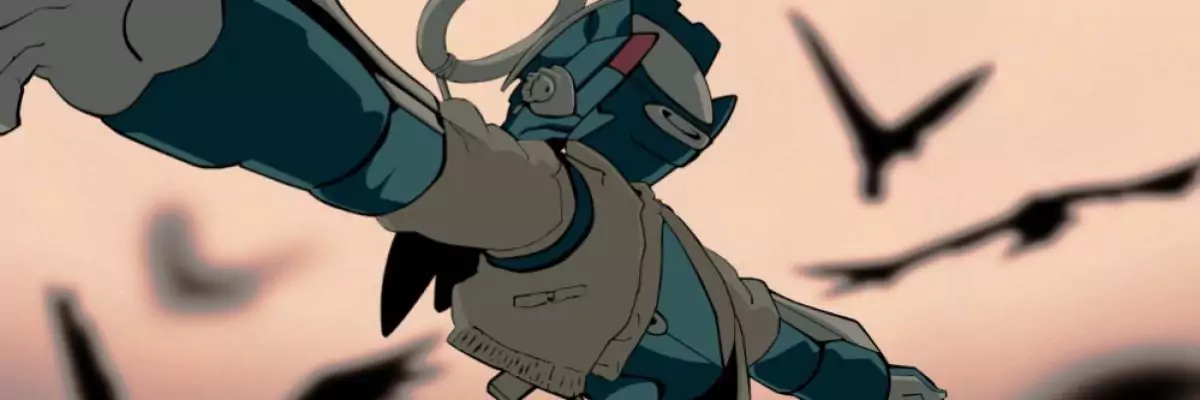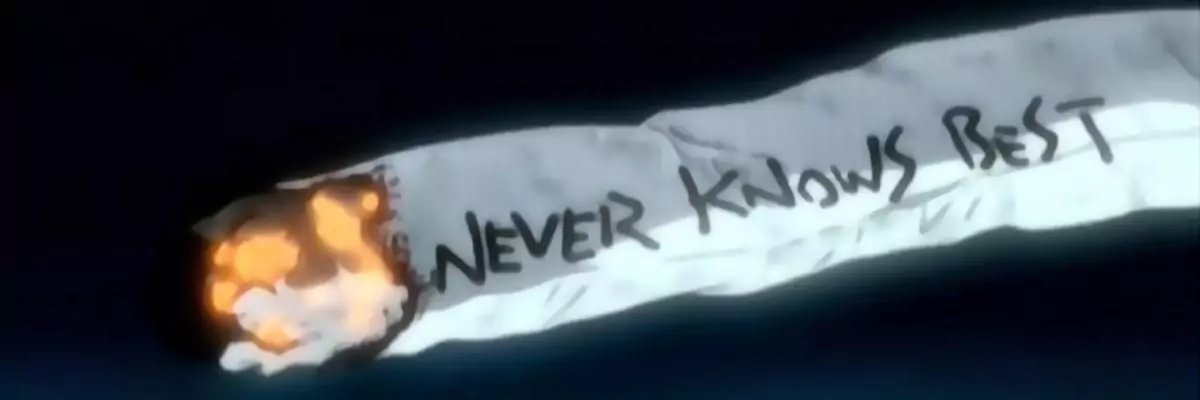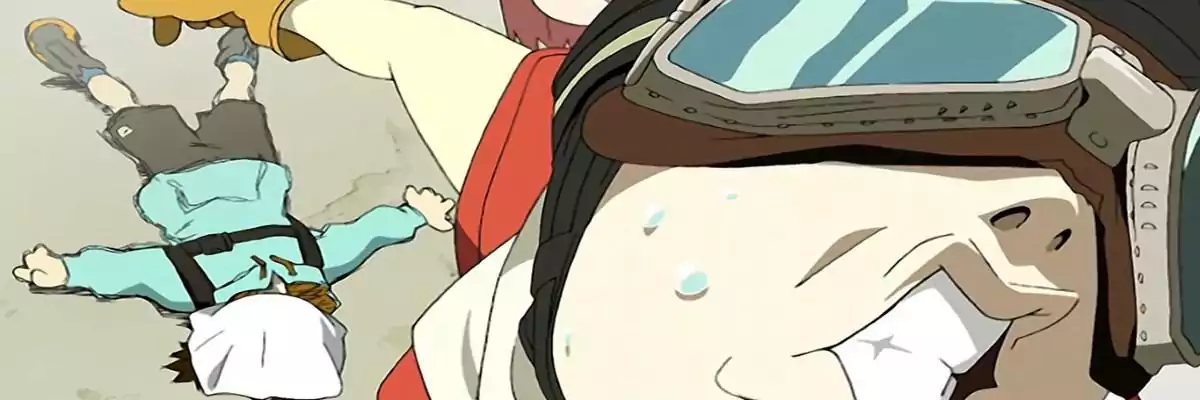FLCL
Back in 2000, I felt very little affinity towards the work of uber otaku Hideaki Anno's Gainax. The company was riding its Evangelion high, but I never really understood what people saw in that series. Then came Furi Kuri [FLCL], a different kind of anime. A blend of all that was anime and then some. I've watched it several times since that first viewing, but the last time must've been 7 or 8 years ago. In other words, the moment was ripe to see if the series still stood proud a good 16 years after it was first released.

The timing for a rewatch is ideal, as Toonami recently announced a brand new 12 episode follow-up series for 2017. And truth be told, even though I loved the original to bits the story specifics never quite stuck with me. On top of that, 2016 also saw the release of Kizumonogatari, the only anime since the original FLCL run that deserves a straight-up comparison with Gainax' darling. Some freshening up was in order and since this OAV clocks in at 150 minutes only, a little binge watch sounded like a fun way to pass the time.
FLCL is what you get when you let a bunch of talented animators run wild. It's the prototype of an animator's wet dream. An impossible mix of influences and homages, ranging from Evangelion and Project A-ko to The Matrix and South Park. FLCL paved the way for films like Dead Leaves, Trava: Fist Planet and Heruzu Enjueruzu, but in its entirety it's less defined and/or contained compared to those films. In many ways, FLCL is the definition of a perfect disaster.
If you're hung up on a decent plot though, FLCL is going to be quite the challenge. Not that it lacks plot, but the story is such a mess that it's pretty hard to keep track of everything that's going on. The premise is muddled enough, with aliens on vespas and robots coming out of people's heads, but it's all the unrelated stuff in between that makes it difficult to construct a coherent whole of all its different elements. Personally I think it's an asset rather than a weakness, but it's divisive at best and some people will get lost in its narrative maze.

This being an animator's animation, it's really all about the animation and art style. There is a dominant art style, but just barely. FLCL switches between four or five returning art styles plus the homages and guest animators that pop up from time to time. From shell-shaded bullet-time to Azumanga Daioh-like abstractions, from hyper animation to South Park simplicity, it's all here. Mind you, this isn't just some "throw everything at the wall and see what sticks" approach, whatever Tsurumaki considered to be worthy was meticulously researched and executed, always looking for original angles that could add something to overall impression. To make it even better, the animation itself is also incredibly lush and wildly creative, making for a very intense visual package. Cherry on the cake are no doubt the animated manga sequences, something never done before or after since.
The soundtrack is equally defining. Handled by J-Rock band The Pillows, it could've ended up a complete disaster. I'm not a fan of the genre and it's everything but an obvious choice for a bonkers series like this, but in a way the songs are what gels everything together. Tsurumaki does a great job integrating the music and the sound does bridge the gap between FLCL's various extremes. As for the dubbing, watch the Japanese dub. I know that's what I always say, but FLCL is so explicitly Japanese that it's impossible to localize anyway. There are so many fast-paced dialogues and typical Japanese puns (you might not get the meaning, but you can definitely make them out) that there's really no contest. Even when you prefer a localized dub, this is the one anime where you have to give the original a fair chance.

While it's hard to pinpoint the one thing that stands out the most, what makes FLCL unique to me is the way it manages to blend its hyperactive front with strong elements of melancholia running underneath. FLCL continuously plays with these extremes, switching between them frantically, creating some kind of start/stop pacing that sounds horrible on paper but works remarkably well while you're watching. It's a bit like that picture that contains two different images depending on how you look at it, but you can never see them both at once. It's both melancholic and hyperactive, never at the same time, but consistently so.
If you're new to Japanese animation, FLCL is probably not the best way to make your way into the genre. It's crazy, it's frantic, it's so out there and so full of references and homages that it's probably a bit too overwhelming to take in (or to distill what parts are typical for anime and what parts are just unique to this series). But if you have a soft spot for animation and you love to see a bunch of very talented people given carte blanche then this is it. It's 150 minutes of pure animated joy, an original and creative piece of animation that raised the bar considerably. The upcoming sequel has big shoes to fill, not just because the original is exceptionally well made, but because it still stands for the reimagining of an entire genre. That's something very hard to replicate.
